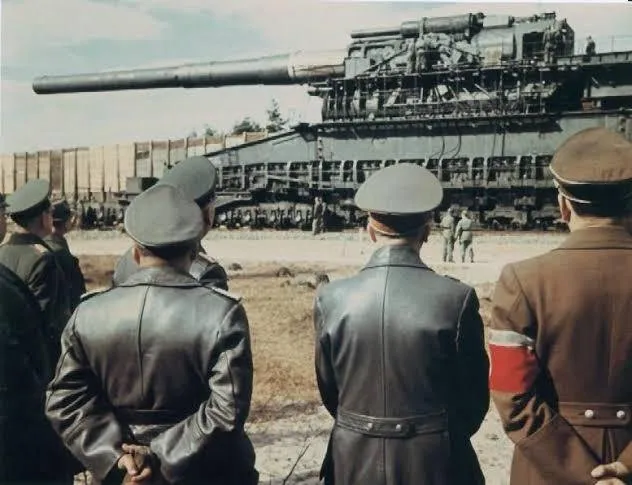
The Landkreuzer P. 1000 "Ratte" (English: Land Cruiser P. 1000 "Rat") was a design for a super-heavy tank for use by Nazi Germany during World War II, proposed by Krupp director Edward Grotte in June 1942, who had already named it "Landkreuzer". Submitted designs and drawings of the tank went under the names OKH Auftrag Nr. 30404 and E-30404/1, which were presented in December 1942. The tank was planned to be 1000 metric tonnes, being far heavier than the Panzer VIII "Maus", the heaviest tank ever built (weighing 188 tonnes). The project gained the approval of Adolf Hitler, who had expressed interest in the development of the tank, but was canceled by Minister of Armaments Albert Speer in early .
The Ratte is known for its enormous size: it would have weighed 1,000 tonnes, five times the weight of the Panzer VIII Maus.The divided weight of the Ratte included 300 tonnes of armament (the total weight of the guns themselves was 100 tonnes, so turret armour would have weighed 200 tonnes), 200 tonnes of armour and frame and 100 tonnes of track and automotive components, while remaining weight would be distributed to miscellaneous features. It was planned to be 35 m (115 ft) long (39 metres (128 ft) when including naval guns), 11 m (36 ft) high and 14 m (46 ft) wide. To compensate for its immense weight, the Ratte would have been equipped with three 1.2 m (3 ft 11 in) wide and 21 m (69 ft) long treads on each side with a total tread width of 7.2 m (23 ft 7 in). This would help stability and weight distribution, but the vehicle's sheer mass would have destroyed roads and rendered bridge crossings next to impossible. It was expected that its height, and its ground clearance of 2 m (6.6 ft), would have allowed it to ford most rivers with relative ease, thus eliminating the need for bridge crossings